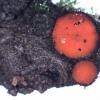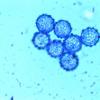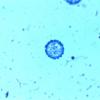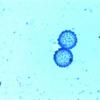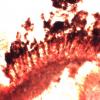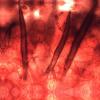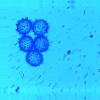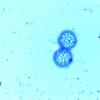
15-12-2025 07:09
 Danny Newman
Danny Newman
indet. Rutstroemiaceae sp. on unk. fallen leavesMc

15-12-2025 21:11
 Hardware Tony
Hardware Tony
Small clavate hairs, negative croziers and IKI bb

15-12-2025 15:54
 Johan Boonefaes
Johan Boonefaes
Unknown anamorph found on the ground in coastal sa

15-12-2025 15:48
 Danny Newman
Danny Newman
Melanospora cf. lagenaria on old, rotting, fallen

15-12-2025 07:05
 Danny Newman
Danny Newman
Pseudosclerococcum golindoi (det: Zotto)near Cosb

15-12-2025 11:49
 Danny Newman
Danny Newman
ITS sequences from the following two collections B

15-12-2025 12:34
 Danny Newman
Danny Newman
indet. Rhytismataceae on oak leafnear Purchase Roa

09-12-2025 12:06
 Andgelo Mombert
Andgelo Mombert
Bonjour,Je recherche l'article concernant Hypobryo
I have found two specimens of this/these over the last couple of days.
The first was found at the same place that I found S heterosphaera (confirmed by Benat) a couple of years ago so I am fairly sure that it is likely to be the same species. The second find at a different site looks to be the same with hairs too long at 620um for S barlae and with some rounded and some slightly pointed tubercules. This seems to fit with the information I can find on S heterosphaera but any support would be welcome.
Thanks
Mal
Ps the last photo is of some S legaliae found not far from the above find.

S. heterosphaera I have studied so far (one from FR; sent by Benat & two from HR) has:
-ascospores globose, (15,3)16,2-19,2(19,8) micr. diam.
-ascospore surface ALWAYS in each beset at least with two types of ornamental units out of either aculei and/or tubercles and/or truncate roller-shaped ornamental units; furthermore, ornamental units partially interconnected with very fine low conective lines in fully mature spores
-large ornamental units 1,1-1,9 micr. diam. interspersed with minute ones (0,3-1,2 micr. diam.); in total 0,3-1,6(2,0) micr. high
-marginal hairs: (250)368-869(1010)/(15,9)19,0-27,0 micr.; up to 9(12) × septate; walls (2,5)3,0-5,2 micr. thick and the base (simple)bi- to trifurcate
S. barlae on the other hand has
-globose ascospores (18,0)18,4-21,4 micr. diam.
-homogenous ornamentation of ONLY roller-shaped pattern with ornamental units strictly isolated mutually 0,6-1,8(2,2) micr. diam. and (0,3)0,4-1,3(1,8) micr. high
-marginal hairs homogenously very short and principally with a simple base: (68)126-310(352) × 10,9-23,6(27,0) micr.; walls (1,2)2,1-4,5(6,7) micr.; up to 3(5) sept.
A "classical" Scutellinia characters make these two undoubtedly micromorphologically distinct!
Cheers,
N.

We'll do our best! :-)
N.

Whan do you plan to publish this new species? Is it on going or postponed?
cheers
François

Personally, I was in terrible mess last year since I barely succeded to move into a new house (things got very much complicated with the construction firm that cost me a lot of time, money and nerves) and since I also got several other serious issues in my life to deal with! Besides vital need for various projects (I also had some payed lectures) I had very limited time to deal with detailed studies on ongoing living specimens, not to mention writing the papers.. :-(
Presently, I am very much in need and keen in writing papers :-) ... I really do hope thet Benat will recover soon...so I would like to include this theme the sooner the better!
Cheers,
N.
Mal
